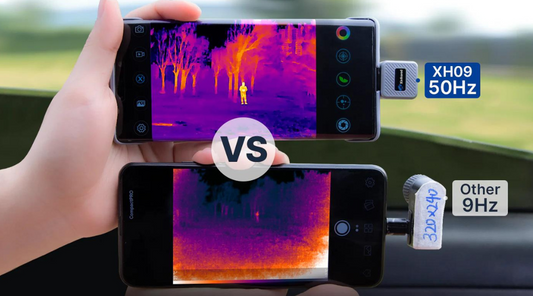How to Detect Solar Panel Anomalies Fast Using Thermal Imaging
In today's rapidly evolving world, solar panels have emerged as a pivotal player in the realm of renewable energy. However, to harness the full potential of solar energy, it's crucial to ensure that solar panels are functioning at their best. This is where thermal imaging comes into play.
Understanding Solar Panel Anomalies
Before we dive into the intricacies of thermal imaging, it's essential to grasp the types of anomalies that can afflict solar panels. These anomalies include hotspots, faulty cells, soiling and debris accumulation, and diode and connection issues. Detecting and addressing these issues promptly is critical to maintaining the efficiency and longevity of your solar panel system.

How Do Thermal Cameras Work
Thermal imaging is a non-invasive technology that allows us to visualize the temperature variations on the surface of objects. It relies on the principle that every object emits infrared radiation, and this radiation can be captured by thermal cameras. The advantage of the thermal camera for solar panel inspection lies in its ability to detect temperature differentials, making it ideal for identifying anomalies. Extended Reading: How Do Thermal Imaging Cameras Work?
Equipment and Tools
To get started with thermal imaging for solar panel inspection, you'll need the right equipment. High-quality thermal cameras are the cornerstone of this technology. These cameras are sensitive to temperature differences and can produce thermal images, which represent temperature variations in different colors. In addition to thermal cameras, you'll require other tools and safety gear to ensure a thorough and safe inspection process.

The Inspection Process
Conducting a solar panel inspection using thermal imaging involves several steps:
1. Pre-inspection Preparations: Ensure that the solar panels are clean and free from obstructions. Calibrate the thermal camera for accurate readings.
2. Capturing Thermal Images: Scan the solar panels with the thermal camera, capturing thermal images that display temperature variations.
3. Analyzing the Images in Real-Time: As you capture images, look for anomalies such as hotspots or temperature gradients. These could indicate potential issues with the panels.
4. Post-inspection Reporting: Generate a comprehensive report that details the anomalies detected, their locations, and their severity. This report will serve as a valuable reference for maintenance and repairs. Here is the free Xinfrared analysis software.
Interpreting Thermal Images
Analyzing thermal images requires a keen eye for temperature differences. Hotspots, for example, appear as bright spots on the thermal image, indicating areas where the solar panel is overheating. Understanding the significance of these temperature variations is crucial in determining the urgency of maintenance or repairs.
Benefits of Fast Anomaly Detection
Swift anomaly detection through thermal imaging offers several advantages:
1. Maximizing Energy Production: Identifying and addressing anomalies promptly ensures that your solar panels operate at peak efficiency, maximizing energy production.
2. Extending Solar Panel Lifespan: By addressing issues early, you can extend the lifespan of your solar panels, reducing the need for costly replacements.
3. Reducing Maintenance Costs: Proactive maintenance based on thermal imaging results can significantly reduce the overall maintenance costs over the life of your solar panel system.
Case Studies and Success Stories
Real-world examples highlight the effectiveness of thermal imaging in solar panel maintenance. In our user’s case, he detected a hotspot through InfiRay Xinfrared P2 Pro thermal imaging, leading to not connecting the plug. And areas of significant temperature differences were found easily.

We can see, thermal imaging is a game-changer in the world of solar panel maintenance. By swiftly detecting anomalies like hotspots and faulty cells, it enables us to maximize energy production, extend the lifespan of solar panels, and reduce maintenance costs. As technology advances, we can expect even more precise and efficient methods for solar panel inspection, further enhancing the efficiency and sustainability of solar energy.




